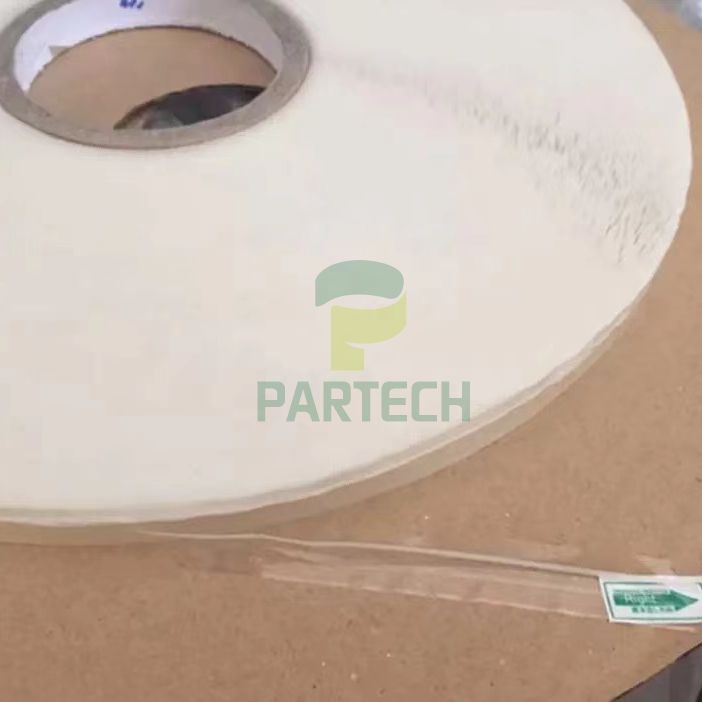Applications of Cellophane Biodegradable Tape
2024-06-12
Cellophane biodegradable tape is an environmentally friendly adhesive tape made from cellophane, a biodegradable and compostable material derived from cellulose, typically sourced from renewable plant-based materials such as wood pulp or cotton linters. Here's an overview of its features, benefits, and applications:
Features:
1. Biodegradable Material:
- Cellophane tape is made from cellulose, a natural polymer that can be broken down by microorganisms in the environment, making it biodegradable and compostable.
2. Compostable:
- Cellophane tape is compostable, meaning it can be safely disposed of in composting facilities or home compost bins, where it will break down into organic matter without leaving behind harmful residues.
3. Renewable Source:
- Cellophane is derived from renewable plant-based materials such as wood pulp or cotton linters, making it a sustainable alternative to petroleum-based plastic tapes.
4. Transparent:
- Cellophane tape is transparent, allowing for clear visibility of wrapped or sealed items without obstructing their appearance or graphics.
5. Strong Adhesion:
- Despite being biodegradable, cellophane tape offers strong adhesion to a variety of surfaces, providing secure and reliable sealing and bonding for packaging and wrapping applications.
6. Tear-Resistant:
- Cellophane tape is tear-resistant, ensuring durability and integrity during handling and transportation of packaged items.
7. Heat-Sealable:
- Cellophane tape can be heat-sealed using heat-activated adhesives or sealers, providing tamper-evident seals for packaging and ensuring product freshness and security.
8. Wide Temperature Range:
- Cellophane tape maintains its adhesive properties and structural integrity over a wide temperature range, making it suitable for use in various environmental conditions.
Benefits:
1. Environmentally Friendly:
- Cellophane biodegradable tape offers a sustainable alternative to conventional plastic tapes, reducing reliance on non-renewable resources and minimizing environmental impact.
2. Biodegradability:
- Cellophane tape biodegrades naturally in composting facilities or soil environments, contributing to waste reduction and soil enrichment without releasing harmful toxins.
3. Compostability:
- Cellophane tape can be composted along with organic waste, diverting it from landfills and returning valuable nutrients to the soil through the composting process.
4. Non-Toxic:
- Cellophane tape is non-toxic and free from harmful chemicals or additives, making it safe for use in food packaging, crafts, and other applications where direct contact with skin or food is possible.
5. Versatile Applications:
- Cellophane tape is suitable for a wide range of packaging, wrapping, crafting, and sealing applications, providing secure and environmentally friendly solutions for home, office, and commercial use.
6. Consumer Appeal:
- As consumers become more environmentally conscious, cellophane biodegradable tape offers a sustainable choice that aligns with eco-friendly values and preferences.
Applications:
1. Packaging and Wrapping:
- Cellophane biodegradable tape is commonly used for sealing and securing packages, envelopes, boxes, and gift wraps, providing tamper-evident seals and eco-friendly packaging solutions.
2. Crafts and DIY Projects:
- Cellophane tape is suitable for various crafting and DIY projects, including scrapbooking, cardmaking, art projects, and gift wrapping, offering strong adhesion and easy handling.
3. Food Packaging:
- Cellophane tape can be used in food packaging applications, such as sealing bags, wrapping sandwiches or baked goods, and securing labels or tags, providing a safe and sustainable option for food contact surfaces.
4. Office and Stationery:
- Cellophane tape is commonly used in office and stationery applications for document sealing, labeling, repairing torn paper, and general-purpose taping tasks, offering reliable performance and biodegradability.
Considerations:
1. Moisture Sensitivity:
- Cellophane tape may lose adhesion or become weakened when exposed to excessive moisture or humidity, so it may not be suitable for outdoor or wet environments.
2. Temperature Sensitivity:
- Extreme temperatures, both high and low, can affect the performance and adhesion of cellophane tape, so it's essential to store and use it within recommended temperature ranges.
3. Compatibility:
- Cellophane tape may not be compatible with all surfaces or materials, so it's advisable to test it on a small area before use, especially on delicate or porous surfaces.
4. Disposal Guidelines:
- While cellophane tape is biodegradable and compostable, it's essential to follow proper disposal guidelines and composting practices to ensure effective decomposition and environmental benefit.
Conclusion:
Cellophane biodegradable tape offers a sustainable and environmentally friendly alternative to conventional plastic tapes for packaging, wrapping, crafting, and sealing applications.



